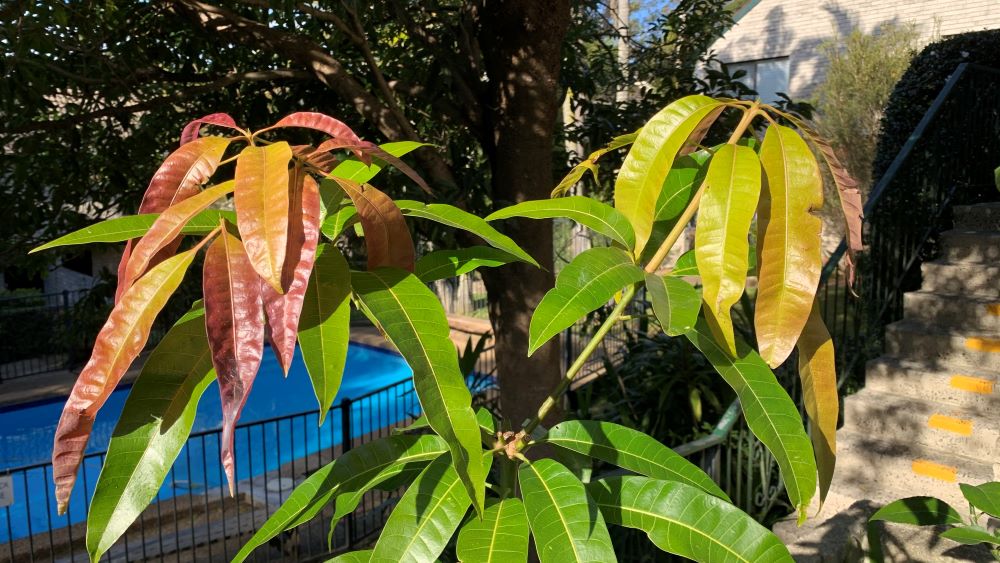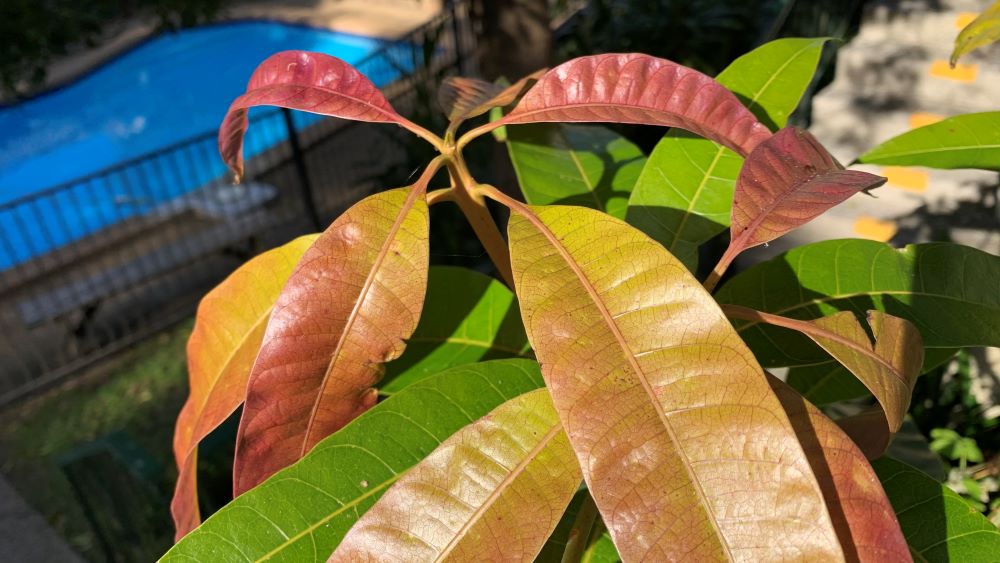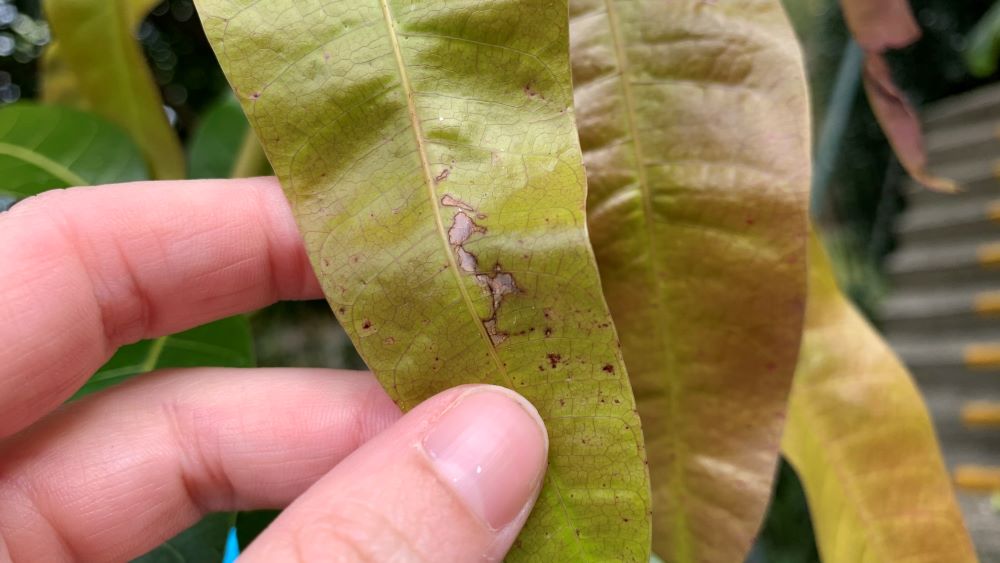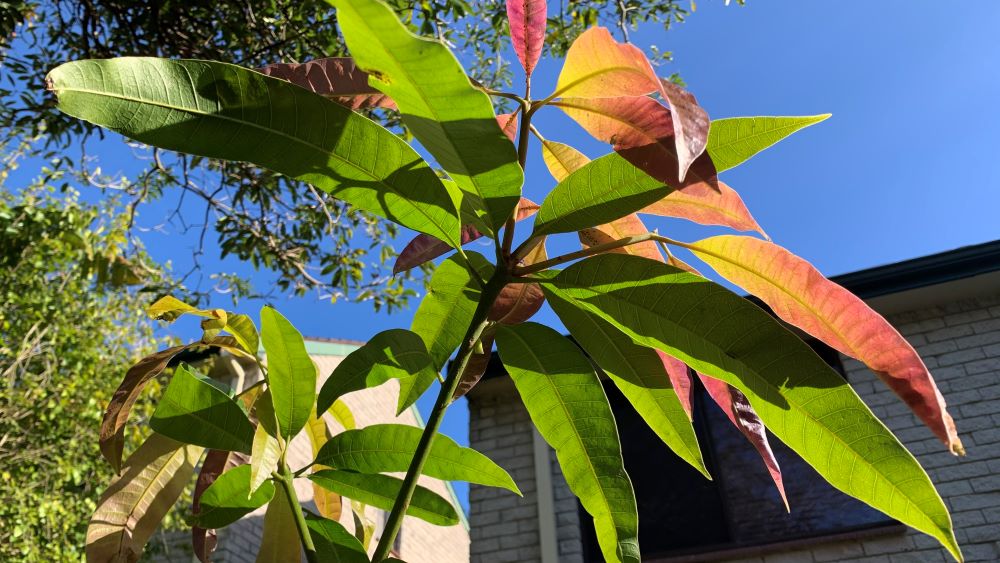Mango trees are hardy but environmental conditions can cause problems with their leaves, fruit branches and can even cause plant death. The top causes of mango trees dying include a lack of nutrients, pest attack, fungal disease or incorrect watering.
This article will explore the top 7 causes of a mango tree dying and how to solve each problem to save your tree from dying.

1. Lack of fertilizer
A lack of nutrients or fertilizer can cause mango trees to slow their growth, develop yellow or brown leaves and can eventually lead to plant death.
A lack of key nutrients and minerals including nitrogen, calcium and iron can all cause mango trees to suffer. You will notice changes in leaf color from green to yellow, deep green veins, or browning on the leaves.
Solution
Keeping mango trees well fertilized is key to avoid nutrient and mineral deficiencies and avoid your mango tree slowly dying. Feed mango trees with a well balanced fruit fertilizer in spring, or you could use pelleted chicken manure.
A fruit fertilizer specialized for mango or citrus trees is perfect. Look out for a fertilizer that contains iron and calcium and apply it when the weather warms. Most slow release fertilizers need to be applied twice per year in spring and again in fall to feed the tree.

2. Lack of water
A lack of water, particularly over the summer months can cause a mango tree to quickly die back. These tropical trees love regular water in spring and summer when they are doing most of their growing. If you live in a tropical region you will be helped by the higher rainfall that happens over these months.
If you are experiencing a year with low rainfall you will need to top up the water yourself. Look out for yellowing or browning leaf tips and check the soil with your finger. If it is dry 2 inches down it is likely that your mango tree needs more water.
If the problem continues tree branches can lose their leaves and start to die back.

Solution
Deep water mango trees that have dried out 2 inches below the surface of the soil with your hose. Apply the water directly at the root zone and avoid splashing water on their leaves. This will help to stop the spread of fungal disease.
You can add a bucket of water with diluted seaweed to help the plant to recover and develop strong roots. Surround the plant with a thick layer of bark or straw mulch to help to keep the water in for longer. Monitor the tree over the next few weeks and deep water again when the surface dries.
You may need to water your mango tree 2-3 times per week in very hot weather with low rainfall.
3. Pest attack
Pests can attack mango trees, particularly in the spring and summer when the weather warms. Sap sucking insects can quickly cause damage to the tree, they will excrete a sweet sticky substance and attract ants. Ants can bring disease and the whole scenario can kill your tree.
The most common pests to attack mango trees include aphids, thrips, mites, scale and fruit fly.

Solution
Sap sucking insects such as aphids, thrips and scale can all be controlled with a spray of neem oil. This concentrated oil is extracted from the neem tree and sold in most garden centers. Mix it up at home in a spray bottle and apply it to any area of the plant that is affected by the insects.
Fruit fly will lay eggs in the fruit of your tree. While they are unlikely to kill the tree they can quickly destroy a whole crop if they are allowed to take over. Set sticky fruit fly traps around your yard to catch the fruit fly before they infest your fruit.
4. Anthracnose
Anthracnose is a fungal disease that can damage mango trees and cause them to die back. This fungus will attack new growth, flowers and even fruit causing black spots to form. The bacteria can spread from cutting tools that have not been cleaned, other trees or splashed up from the soil onto the leaves.
Solution
This fungus can be prevented and treated with a copper fungicide. Avoid watering the mango tree on the leaves and surround it with mulch to stop soil from splashing on the leaves.
5. Botryosphaeriaceae
Botryosphaeriaceae are a group of fungus that can attack woody trees. Lots of time this group of fungus can live in plant tissue without causing harm. IF the tree however is not in great health they can suffer and even die from this fungal infection.
If the branches break or get damaged the fungus can attack the tree. Other causes of stress on the tree include extremely cold weather, hot weather, the plant drying out or pest attack.
You can tell your mango is suffering from botryophaeriales fungus because the branches will start to lose their leaves and die back.
Solution
To prevent this problem and help the tree to heal, always use clean secateurs to avoid spreading the fungus. Water the plant well over summer, avoid any harsh pruning in summer and winter and treat any pests that are attacking the plant.
Refresh the mulch under your mango tree. Put the mulch in the bin and add some fresh mulch.
6. Overwatering
Mango trees that are overwatered can quickly run out of nutrients, develop fungal disease and can die back over time. Mango trees need regular water but too much or a lack of drainage can lead to problems.

Solution
Plant mango trees in well draining soil to avoid their roots sitting in water for too long. Mix compost and aged manures through heavy clay soil before planting and raise the soil level slightly to improve drainage. Choose a premium potting mix when planting out new mango trees in pots.
Check the soil before watering your mango tree in winter. During the cooler months the soil temperature will be lower and the soil will stay wet for longer. Only water the plant once the soil dries out to avoid fungal growth on the roots. This can stop the plant from absorbing the water it needs.
Mango trees are less likely to suffer from overwatering as the temperature is higher and the soil will dry out quicker. It is still best to test the soil before watering to make sure that it does not become soggy.
7. High salt content of water
Irrigating mango trees with water that contains loads of salt and other minerals can cause the plant to suffer and even die. Bore water or dam water can often contain lots of salt which can build up in the soil over time. This can cause brown leaf tips and even lead to whole branches dying back
Solution
Flush mango trees with fresh water, this could be fresh rainwater or tap water from another source. This will wash the salts through the soil and help to reduce their concentration around your mango tree roots.
Repeat this again a week later to help the plant recover. It is best if you can switch to a water source that is lower in salt but flushing the tree with fresh water regularly will help to counteract this problem.

Mango Tree Dying | Summary
Mango trees are great for tropical gardens where they get lots of summer rain, loads of sunlight and are growing in free draining soil. Give them a great spot in your garden, build up the soil with organic matter and feed them with an organic fertilizer.
Citrus food is great for mangoes to replace the nutrients lost during fruiting. Water them well in the warm weather to keep your plant healthy and happy.
Happy growing.
I am an accredited practicing dietitian, experienced gardener and a dedicated cook. I love writing and sharing my experience so you can learn from my successes and mistakes.
